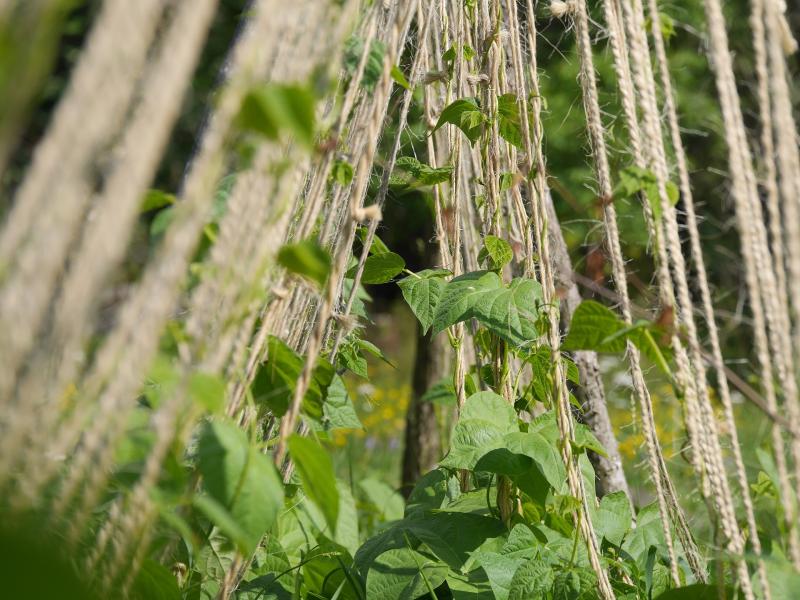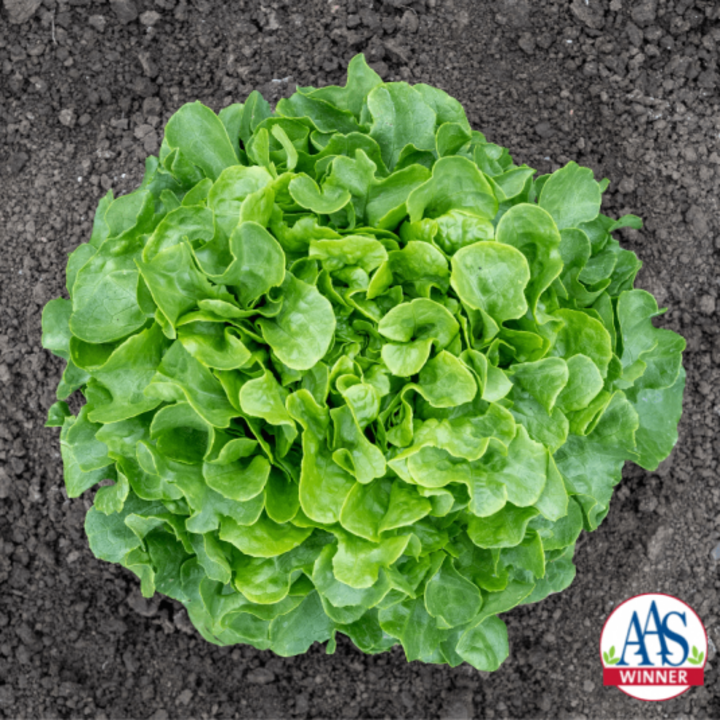Sarah Browning, Nebraska Extension Educator

Use vertical structures with crops like beans or peas, so your plants grow up rather than out.
Many people don't have a large landscape, but still enjoy gardening. A windowsill, patio, balcony or doorstep can provide sufficient space. Whether it’s flowers, herbs or vegetables you want to grow, container gardening may be the answer to your gardening needs. Problems with soil-borne diseases, nematodes, or poor soil can also be overcome by switching to containers.
The amount of sunlight your container garden spot receives determines what crops or flowers can be grown. Generally, root and leaf crops tolerate partial shade, but vegetables grown for their fruits, like tomatoes or peppers, need at least six hours of full, direct sunlight each day. They perform even better with 8-10 hours.
Choose the largest containers possible for your location. Providing your plants a large soil area for root growth will make them more vigorous and productive. Plus, larger containers dry out slower than smaller ones do during hot weather when your plants are fully grown.
Use a Good Soil Mix
A fairly lightweight potting mix is best in containers; soil straight from the garden is usually too heavy unless your garden has sandy loam or sandy soil. However, garden soil can also contain disease organisms, so if you’ve had disease problems consider using a prepared peat-based soil mix from the garden center or make your own soil blend.
To mix your own soil, use one part peat moss or screened compost, one part garden loam and one part clean coarse sand. Incorporate a complete, slow release fertilizer (10-10-10 or 20-20-20) according to your container size and the fertilizer label directions.

Plan Your Garden Wisely
Since growing space is much more limited in containers, you’ll need to make the most of your garden space. Try one or more of the following techniques to get the biggest harvest from your small space.
- Choose compact or bush-type vegetable cultivars. With increasing interest in container gardening, plant breeders and seed companies continue to develop vegetables specifically bred for container culture. These cultivars are not necessarily miniature or dwarf and may produce as well as standard types if the receive proper care.
- Grow high yielding vegetables, such as tomatoes, lettuce, turnips, summer squash and edible-pod peas.
- Use vertical structures with crops like beans or peas, so your plants grow up rather than out.
- Avoid overplanting any single vegetable. Summer squash and zucchini are two of the biggest offenders when it comes to over-production. One plant for every one or two family members is probably enough.
- Interplant fast-maturing crops, such as lettuce, radishes, spinach and beets together with slow-maturing crops.
- Plant both early-maturing and late-maturing cultivars of the same vegetable.
Planting & Care
Container crops should be planted at the same time you would plant an in-ground garden. But if you have a protected, warm location, you may be able to start crops even earlier than normal.
Pay particular attention to watering container plants. Because of the relatively small soil volume containers dry out quickly, especially on a concrete patio in full sun. Daily watering, or even twice daily watering, may be necessary in the middle of summer when your plants are heavily bearing and the weather is hot. Soak the entire root ball down with each watering, so that water runs out the drainage holes.
Even if you incorporated a slow-release fertilizer into the soil before planting your plants will need additional fertilization throughout the summer. Additional slow-release fertilizer can be applied to the top of the soil and lightly mixed in. Or a water-soluble fertilizer applied bi-weekly. Follow your fertilizer’s label directions.
Image above - 'Bauer' lettuce, develops dense compact heads suitable for growing in containers or other small spaces. Image from All-American Selections.
Search Our Archive
Associated Video
Edibles for Small Spaces
Nebraska Extension Landscape Horticulture Specialist Kim Todd discusses how you can still grow your own food even if you don't have much space where you live